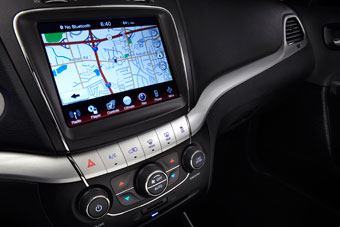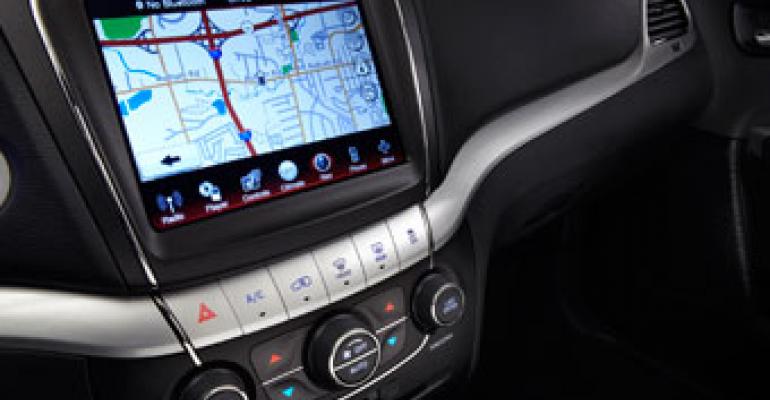
An aggressive showroom-rejuvenation strategy that saw Chrysler vanish temporarily from the public spotlight is paying dividends, the auto maker’s quality chief says in the wake of significant customer-satisfaction gains.

Except for one day when Chrysler opened its doors to give stakeholders and observers a peek at its product plans, the auto maker walled itself off from curious media for 18 months following its tumultuous bankruptcy in June 2009.
The result: 16 new or significantly refreshed products and marked improvement in the annual J.D. Power and Associates’ Automotive Performance, Executive and Layout (APEAL) study.
Three Dodge-brand vehicles topped their respective segments, while Jeep and Chrysler were among the industry’s most-improved brands.
“That tells us that if we do things properly, working with customers and giving them what they want, rather than what they think they want, we can be successful,” Betts tells Ward’s, adding: “For every car that we intervened on, we saw a significant improvement” in the APEAL study.
When Fiat assumed management control of post-bankruptcy Chrysler, the auto maker’s product-development focus shifted from cost-cutting to customer satisfaction, Betts has said.
Among the features that benefited was the auto maker’s UConnect telematics system, which scored particularly well in J.D. Power’s 2011 APEAL study, Betts says.
Chrysler’s goal was to bake in sufficient intuitiveness so “somebody who had had never seen it before, in no time they could figure it out,” he says, adding the auto maker learned size definitely matters.
Icons about the size of a quarter were conveniently placed on an 8.4-in. (21.3-cm) touchscreen. The larger proportions mitigate the impact of bumpy roads that “bounce” a user’s finger and lead to errant inputs, Betts says.
And then there is the capacity for reduced driver-distraction. “(When) my hand’s going toward the button, I want to look back to the road and be able to know that I’m going to hit the spot I was aiming for,” he says. UConnect’s button size “seems to be the right size to do that.”
Telematics represent “a difficult area for the industry,” Betts says. “There’s a lot of moaning and complaining about those systems here and there.”
Critics have said Ford’s system, MyFord Touch, is too complex – something the auto maker denies. Buttons on its touchscreen are smaller than those on UConnect Touch.
Chrysler also has heard its share of complaints in the past. Customers grumbled loudly about its use of steering-column stalks for cruise-control actuators.
The auto maker responded by placing the controls on the faces of Chrysler steering wheels. This shift began with the launch of the redesigned-for-’10 Jeep Grand Cherokee.
While Chrysler brands still rank near the bottom of the APEAL study’s 1,000-point scale with scores ranging from 759 to 775, their respective tallies reflect marked improvement.
Jeep and core-brand Chrysler saw their scores rise “considerably” from last year’s APEAL study, J.D. Power says. They gained 32 and 27 points, respectively, compared with the industry’s overall 3-point increase.
Dead-last in 2010, Jeep displaces Chrysler in 30th place among the 33 brands evaluated. Chrysler moves up to 21st, while Ram and Dodge finish 23rd and 26th, respectively. However, no Chrysler brand scored better than the industry average.
The three Dodge products that dominated their segments were the Challenger, in midsize sporty car; the Durango, in midsize crossover/SUV and the Charger in fullsize car. The Durango and Charger are all-new for ’11, while the Challenger benefited from a new transmission and Chrysler’s Pentastar V-6, this year named one of Ward’s 10 Best Engines.
Ironically, powertrain is the only category in which the Challenger did not best its competitors. In a group that included second-place finisher, the Chevrolet Camaro, the Challenger finished first in:
- Interior
- Storage and space
- Audio/entertainment/navigation
- Seats
- Climate controls
- Driving dynamics
- Visibility/driving safety
- Fuel economy
“Dodge would have been the most-improved brand and would have been the highest-rated non-premium brand in the survey,” Betts adds. But its results were skewed by customer reaction to the C-segment Caliber hatchback and Nitro midsize CUV.
Nitro production is scheduled to end in December, while the Caliber is expected to begin its showroom exit next year.
Dodge and BMW were the only brands that had three segment winners. BMW topped compact premium sport car, midsize premium car and entry premium crossover/SUV, with the Z4, 5-Series and X3, respectively.
Ford and Honda each garnered a pair of No.1 finishes.
The APEAL study measures consumer satisfaction based on owner evaluations of more than 80 vehicle attributes, J.D. Power says.
Porsche ranked first, for the seventh consecutive year, with 879 points. Jaguar was second, followed by BMW, Land Rover and Audi.
Hyundai was the most-improved brand, moving up to the 15th spot from 28th in 2010.




